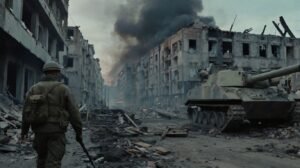
Introduction
As the conflict in Ukraine reaches a critical juncture, often referred to as a “frozen front,” the implications of this stalemate reverberate far beyond the borders of Ukraine. The ongoing war has not only reshaped the geopolitical landscape but has also had profound effects on global economics, humanitarian efforts, and international relations. Understanding the complexities of the current military situation, the humanitarian crisis, the dynamics of Western support, and Russia’s strategic realignment with non-Western nations is crucial for grasping the broader consequences of this enduring conflict.
This article aims to explore several key areas: the current military situation characterized by stalemates and drone warfare, the humanitarian impact and refugee crises, the balance of Western fatigue versus continued support for Ukraine, Russia’s economic realignment, the ramifications on global energy and food prices, and China’s role in peace mediation. By incorporating personal stories, we will humanize the conflict and highlight the resilience of those affected, presenting a comprehensive picture of the war’s far-reaching consequences.
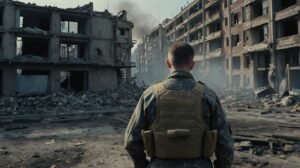
Current Military Situation
Stalemates and Counter-Offensives
The military landscape in Ukraine has evolved into a complex web of stalemates and occasional counter-offensives. After initial Russian advances in 2022, Ukrainian forces demonstrated remarkable resilience, leveraging Western military support to counterattack and reclaim lost territory. However, as of 2024, the frontlines have largely stabilized, with both sides entrenched in a prolonged conflict.
The Nature of Stalemates
Stalemates in warfare occur when neither side can secure a decisive victory, leading to a drawn-out confrontation. In Ukraine, this has manifested in a series of fortified positions along the frontlines, particularly in the eastern regions of Donetsk and Luhansk. Russian forces have heavily fortified their positions, utilizing a combination of ground troops and artillery to maintain control over the territories they have captured.
Ukrainian forces, on the other hand, continue to employ guerrilla tactics, utilizing their knowledge of the terrain to disrupt Russian supply lines and launch targeted strikes. However, the challenges of advancing against well-defended positions have made significant territorial gains difficult to achieve.
The Role of Drone Warfare
Drone warfare has emerged as a defining characteristic of the conflict, fundamentally altering the dynamics of combat. Both Ukrainian and Russian forces have integrated drones into their military strategies, using them for reconnaissance, precision strikes, and logistical support. This shift in technology has made it increasingly difficult for ground troops to operate without the constant threat of aerial surveillance and strikes.
Ukrainian forces have effectively utilized commercial drones to gather intelligence on Russian troop movements, while larger military drones have been employed for targeted strikes against key assets. The ability to conduct real-time reconnaissance has allowed Ukrainian commanders to make informed decisions on the battlefield, providing a tactical advantage in certain situations.
However, the use of drones has also raised ethical concerns, particularly regarding civilian casualties. Incidents of drone strikes in populated areas have resulted in significant loss of life, drawing criticism from humanitarian organizations and raising questions about the legality of certain military operations.
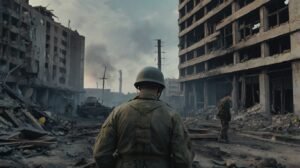
The Human Cost of Warfare
The human cost of the ongoing conflict is staggering. Casualty figures for both military personnel and civilians continue to mount, with thousands of lives affected. The emotional toll on families and communities is profound, as individuals grapple with loss, displacement, and trauma.
Personal Stories from the Frontlines
Personal narratives from soldiers on both sides reveal the harsh realities of war. Ukrainian soldiers describe their experiences of fighting for their homeland, often sharing stories of bravery and camaraderie. For example, a Ukrainian sergeant named Oleksandr recalls the harrowing moments during a counter-offensive: “We were outnumbered and outgunned, but we fought with everything we had. It was not just about territory; it was about our families and our future.”
Conversely, Russian soldiers also express their struggles, many of whom were deployed without fully understanding the conflict’s motivations. A Russian private named Dmitry reflects on his deployment: “I was told we were liberating people, but when I saw the destruction, I started to question everything. It’s hard to reconcile what I was taught with what I see.”
These stories highlight the personal sacrifices made by individuals on both sides, emphasizing that war is not just a series of battles but a deeply human experience filled with fears, hopes, and aspirations.
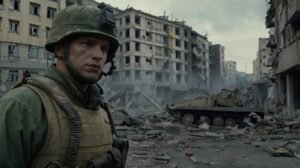
Humanitarian Impact and Refugee Crises
The Displacement Crisis
The humanitarian impact of the war in Ukraine cannot be overstated. Millions have been displaced since the conflict erupted, with over 8 million Ukrainians internally displaced and more than 6 million fleeing to other countries, primarily in Europe. This mass displacement has resulted in one of the most significant humanitarian crises in recent history.
The Experience of Refugees
Families have been torn apart, and many individuals have been forced to leave loved ones behind in their quest for safety. Personal stories of resilience and heartbreak abound among refugees. Many recount harrowing journeys, enduring perilous conditions as they flee their homes, often with little more than the clothes on their backs.
Take the story of Kateryna, a mother of three who fled her home in Kyiv. “We left in the middle of the night, not knowing if we would ever return,” she shares. Kateryna’s journey took her through treacherous terrain, crossing borders and facing uncertainty at every turn. Today, she lives in a refugee center in Germany, grappling with the challenges of adjusting to a new life while holding onto hope for her children’s future.
Similarly, Ivan, a 45-year-old carpenter from Mariupol, recounts his experience: “I watched my city burn. I had to choose between staying and facing death or leaving everything behind. I chose to leave.” Ivan now works in a factory in Poland, trying to rebuild his life while sending money back home to support his family.
The Role of Host Nations
Countries hosting Ukrainian refugees have made commendable efforts to provide shelter and support. Nations like Poland, Germany, and Hungary have opened their borders and hearts, offering food, shelter, and essential services to those in need. Local communities have mobilized to support incoming refugees, creating a sense of solidarity and compassion amidst the crisis.
Challenges of Integration
However, the sheer scale of the refugee crisis has overwhelmed some areas, leading to concerns about the long-term integration of refugees into host societies. Many refugees face challenges accessing education, employment, and healthcare, creating a complex web of needs that require ongoing international support.
Educational institutions in host countries have worked tirelessly to accommodate the influx of Ukrainian children. Schools have implemented language programs and mental health support to help these children adjust to their new environments. However, teachers and administrators face challenges in meeting the diverse needs of these students, many of whom have experienced trauma due to the conflict.
In Poland, for instance, schools have been inundated with Ukrainian children, leading to larger class sizes and increased pressure on resources. Teachers report that while many children are eager to learn, they also carry the emotional scars of war, requiring additional support and understanding.

The Psychological Impact of Displacement
The psychological impact of displacement is significant and often overlooked. Many refugees experience trauma, anxiety, and depression as they grapple with the loss of their homes and the uncertainty of their futures. Humanitarian organizations are working tirelessly to address these mental health needs, providing counseling and support services to help individuals cope with their experiences.
Community centers across Europe offer workshops and support groups for refugees, creating spaces where individuals can share their stories and find solace in connecting with others who have faced similar challenges. Personal narratives shared in these sessions highlight the resilience of the human spirit.
For instance, a young mother named Oksana shares her journey of healing after losing her husband in the war. “Through group therapy, I found strength in connecting with others who understand my pain,” she explains. “We may have lost so much, but we are not alone in this fight.” This sense of community is essential in helping individuals navigate their trauma and rebuild their lives.
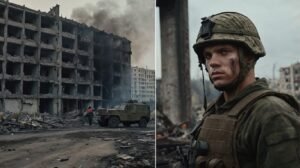
Western Fatigue vs. Continued Support
The Evolving Landscape of Western Support
As the war continues, divisions among Western allies have become more apparent. Initially presenting a united front in support of Ukraine, nations such as the United States, European Union members, and NATO allies are now grappling with signs of fatigue. The prolonged nature of the conflict has raised questions about the sustainability of military aid and humanitarian assistance.
In the United States, political divisions have led to debates over the level of support for Ukraine. Some lawmakers argue for a reassessment of military aid, citing domestic concerns and the need to prioritize national issues. Others emphasize the importance of standing firm against Russian aggression and supporting Ukraine as a matter of principle. This division reflects a broader sentiment among the American public, where opinions on the conflict vary widely.
Economic Pressures and Public Sentiment
In Europe, concerns about the economic repercussions of the war are mounting. Rising energy prices, inflation, and supply chain disruptions have prompted some countries to reconsider their stances on supporting Ukraine. Nations heavily reliant on Russian energy have faced particular challenges, leading to calls for a more pragmatic approach to the conflict.
For example, Germany, which has historically depended on Russian gas, is navigating a delicate balance between supporting Ukraine and ensuring energy security for its citizens. The German government has sought to diversify energy sources while maintaining commitments to NATO and European allies.
The Impact of Public Opinion
As the conflict drags on, public opinion plays a crucial role in shaping government policies regarding support for Ukraine. While many citizens initially supported aid, concerns about domestic issues, such as rising inflation and economic instability, are beginning to influence opinions. Political leaders must navigate these changing sentiments while balancing international obligations and domestic priorities.
Polling data indicates that while support for Ukraine remains strong among certain demographics, there is a growing sentiment of fatigue among others. This shift could impact the political landscape in various countries, leading to potential changes in foreign policy decisions.
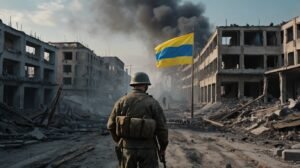
Russia’s Economic Realignment
Trade with China, India, and Africa
In response to Western sanctions and the ongoing conflict, Russia has sought to realign its economic partnerships. The Kremlin has turned its focus to countries such as China, India, and various African nations to bolster trade and secure alternative markets for its energy exports.
Strengthening Ties with China
China has emerged as a key ally for Russia, with both countries deepening their economic ties. Increased energy cooperation has allowed Russia to redirect oil and gas supplies to China, compensating for losses incurred from reduced sales to European markets. This partnership has also extended to military cooperation, with Russia supplying advanced weaponry to China.
China’s need for energy resources aligns with Russia’s goals of finding new markets. As a result, the two nations have forged a symbiotic relationship, further isolating Russia from Western economic influence.
Expanding Trade with India and Africa
India has similarly increased its imports of Russian oil, taking advantage of discounted prices amid the conflict. The growing trade relationship between Russia and India highlights a shift in global economic dynamics, as countries seek to diversify their energy sources and reduce reliance on traditional suppliers.
In Africa, Russia has made significant inroads through diplomatic efforts and economic partnerships. The Kremlin has sought to strengthen ties with African nations by offering military support, trade agreements, and investments in various sectors. This outreach reflects Russia’s desire to expand its influence on the continent and create new markets for its goods.
The Impact on Global Trade Dynamics
Russia’s economic realignment has significant implications for global trade dynamics. As Western sanctions continue to isolate Russia economically, the country increasingly turns to non-Western partners. This shift affects the availability of goods and services and alters the geopolitical landscape.
Countries that align themselves with Russia may face scrutiny from Western nations. The potential for increased economic cooperation between Russia and its new partners could lead to tensions in international relations, as the West seeks to counterbalance Russia’s influence in various regions.
Moreover, the economic realignment has consequences for global energy markets. As Russia redirects its energy exports to Asia and Africa, it is likely to impact supply and demand dynamics in these regions. Countries that previously relied on Russian energy may need to seek alternative sources, leading to a reshuffling of global energy partnerships.
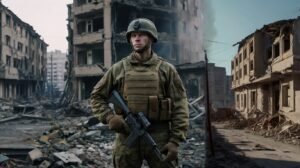
Global Energy and Food Prices
Rising Energy Prices
The conflict in Ukraine has had a profound impact on global energy prices. As the war drags on, uncertainties surrounding supply chains, production levels, and geopolitical tensions have contributed to rising prices. Oil and gas prices have surged, leading to increased costs for consumers and businesses alike.
European countries, particularly those heavily reliant on Russian energy, have faced significant challenges in securing alternative sources. Efforts to diversify energy supplies and reduce dependence on Russian gas have led to higher prices and increased competition for resources. The transition to renewable energy sources has also been impacted, as countries scramble to secure energy supplies amid the ongoing conflict.
The rising costs of energy have broad-reaching implications for households, businesses, and governments. Families are faced with higher utility bills, while businesses must navigate increased operational costs. In many cases, these rising expenses are passed down to consumers, exacerbating inflationary pressures and contributing to economic instability.
Food Security Concerns
In addition to rising energy prices, the war in Ukraine has disrupted global food supplies, leading to serious concerns about food security. Ukraine is known as the “breadbasket of Europe,” and its agricultural production plays a crucial role in feeding millions worldwide. The conflict has hindered agricultural activities, leading to reduced output and increased prices for staple crops such as wheat and corn.
The impact of rising food prices is particularly pronounced in developing countries, where many populations already face food insecurity. The combination of higher energy costs and disrupted food supplies has created a perfect storm, exacerbating the challenges faced by vulnerable communities.
Humanitarian Response to Food Insecurity
Humanitarian organizations are working tirelessly to address these issues, assisting those affected by rising prices and food shortages. However, the scale of the crisis requires a coordinated global response to ensure that those in need receive the support necessary to survive.
International aid plays a vital role in addressing food insecurity exacerbated by the conflict. Organizations such as the World Food Programme (WFP) and various non-governmental organizations (NGOs) are mobilizing resources to provide food assistance and support agricultural production in affected regions.
For instance, the WFP has launched emergency food relief programs to support displaced families and communities facing hunger. By providing cash assistance and food supplies, these organizations aim to alleviate immediate suffering while also promoting long-term recovery and resilience.
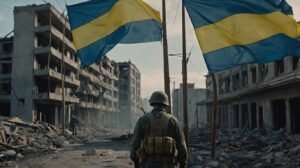
China’s Peace Mediation Efforts and Geopolitical Motives
China’s Role in the Conflict
As the war in Ukraine continues, China has positioned itself as a potential mediator in the conflict. Chinese President Xi Jinping has expressed a desire to facilitate peace talks between Russia and Ukraine, emphasizing the importance of dialogue and negotiation. China’s involvement reflects its growing influence on the global stage and its desire to be seen as a responsible power.
However, China’s motives in the conflict are multifaceted. While it seeks to promote stability in the region, its alignment with Russia raises questions about its long-term intentions. China benefits from a close partnership with Russia, particularly in the areas of energy and trade. This relationship allows China to secure resources while simultaneously countering Western influence.
Geopolitical Implications
China’s role as a mediator in the Ukraine conflict has significant geopolitical implications. By positioning itself as a neutral party, China aims to enhance its diplomatic standing and promote its vision of a multipolar world. However, this approach also risks straining its relationships with Western nations that support Ukraine.
The potential for peace talks facilitated by China may lead to a reevaluation of global alliances. Countries that align themselves with China may seek to distance themselves from Western powers, creating a more complex geopolitical landscape. The ramifications of these shifts could reshape international relations for years to come.
The Long-Term Perspective
China’s interest in mediating the Ukraine conflict is also driven by its long-term strategic goals. As a rising global power, China seeks to expand its influence in various regions while promoting its Belt and Road Initiative (BRI). By playing a role in peace negotiations, China can position itself as a key player in international diplomacy and strengthen its ties with both Russia and Ukraine.
However, the success of China’s mediation efforts depends on its ability to navigate the complex dynamics of the conflict. As the situation evolves, China must balance its interests with the need for genuine progress toward peace.
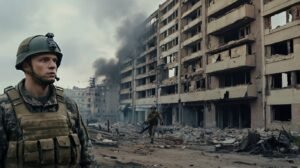
Humanizing the Conflict: Personal Stories
Voices of the Displaced
Amid the geopolitical and economic complexities, the human cost of the war remains paramount. Personal stories from those affected by the conflict provide a poignant reminder of the stakes involved.
Take the story of Olena, a mother of two who fled her home in Kharkiv. As bombings intensified, she made the difficult decision to leave everything behind in search of safety for her children. “I had to think about their future,” she recalls, tears in her eyes. Olena’s journey took her through treacherous terrain, crossing borders and facing uncertainty at every turn. Today, she resides in a shelter in Poland, grappling with the challenges of adjusting to a new life while hoping to reunite with her husband, who remains in Ukraine fighting for their homeland.
Similarly, the experiences of refugees highlight the resilience of the human spirit. Many individuals have found ways to rebuild their lives in the face of adversity. Volunteer organizations and local communities have stepped up to provide support, offering food, shelter, and resources to help refugees integrate into their new environments.
In interviews, refugees like Andriy, a former teacher who now volunteers at a local community center, share their stories of hope and determination. “We may have lost our homes, but we have not lost our spirit,” he declares. Andriy’s commitment to helping others navigate the challenges of displacement underscores the strength of solidarity in times of crisis.
The Resilience of Communities
Beyond individual stories, the resilience of communities affected by the war is also noteworthy. In cities that have become hubs for refugees, residents have come together to create a supportive environment. Community centers have emerged as vital resources, offering language classes, job training, and mental health support for those in need.
The power of community is exemplified by initiatives that bring together refugees and residents. These programs foster cultural exchange and understanding, allowing individuals from different backgrounds to connect and learn from one another. In these shared spaces, friendships are formed, and a sense of belonging is nurtured, helping to ease the transition for those who have been uprooted.
The Role of Humanitarian Organizations
Humanitarian organizations play a crucial role in providing assistance and support to those affected by the conflict. From emergency relief efforts to long-term recovery programs, these organizations are working tirelessly to address the multifaceted needs of displaced individuals and families.
In addition to providing food, shelter, and medical care, NGOs are also focused on promoting education and psychological support for children affected by the war. Recognizing the importance of education in rebuilding lives, many organizations have established programs to ensure that children have access to learning opportunities, even amid crisis.
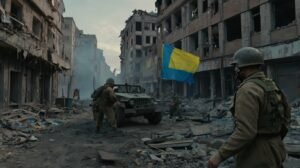
Conclusion
The frozen front in Ukraine continues to shape global priorities, impacting military strategies, humanitarian efforts, economic relationships, and geopolitical dynamics. As the conflict endures, the stakes remain high, with millions of lives affected by the consequences of war.
The humanitarian crisis demands urgent attention, as refugees seek safety and stability while grappling with the uncertainties of their futures. Western support for Ukraine faces challenges, with divisions emerging amid growing fatigue. Simultaneously, Russia’s economic realignment signals a shift in global trade dynamics, further complicating the landscape.
China’s mediation efforts introduce a new layer of complexity, highlighting the intricate interplay of diplomacy and geopolitics. As we navigate these challenges, it is essential to keep the human stories at the forefront, reminding us of the resilience and strength of those affected by the conflict.
As the world watches, the lessons learned from this ongoing crisis will undoubtedly shape the future of international relations, humanitarian efforts, and global cooperation. The hope for peace remains, as individuals continue to strive for a brighter tomorrow amid the shadows of war.
For further insights and analysis on global issues, visit **zaroraterishta.com**.
FAQs on Ukraine’s Current Situation (2024-2025)
-
What is Ukraine’s biggest challenge in 2024?
Ongoing war with Russia, economic instability, and reconstruction efforts. -
How is the war affecting Ukraine’s economy?
Infrastructure damage, high military spending, and disrupted trade are slowing growth. -
What role does Western aid play?
Financial and military support from the U.S. and the EU is critical for defense and recovery. -
Is Ukraine’s agricultural sector recovering?
Partial recovery, but Black Sea export routes remain risky due to Russian threats. -
How are sanctions impacting Russia’s war efforts?
They weaken Russia’s economy, but haven’t stopped military production entirely. -
What’s the humanitarian situation in Ukraine?
Millions remain displaced, with urgent needs for housing, medical care, and jobs. -
Will Ukraine join NATO or the EU soon?
EU accession talks are progressing, but NATO membership is unlikely during an active war. -
How stable is Ukraine’s government now?
Leadership remains resilient, but war fatigue and political pressures are growing. -
What’s the outlook for 2025?
Depends on battlefield gains, Western aid continuity, and reconstruction speed. -
How can the global community help?
Sustained aid, investment in reconstruction, and diplomatic pressure on Russia.
